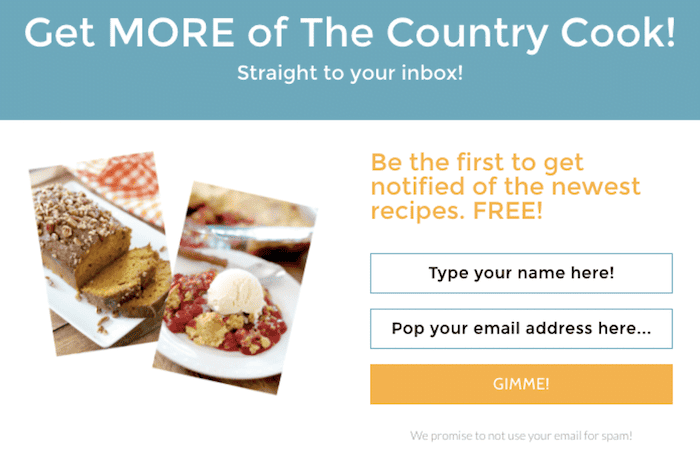I remember the last time I watched an American football game. It was a hard-fought playoff victory for the Buffalo Bills against the Miami Dolphins. The adrenaline rush, the roaring sound of the audience, the suspense, and then the final moment of euphoria when victory was secured.
Now this feeling… isn’t this similar to how you feel when composing a successful email marketing campaign?
It’s all a game in and of itself, from the rush we get when we hit send to track opens and click-throughs, creating the ideal strategy to engage with an elusive audience, and feeling victorious when our efforts are successful. Wondering how?
| On the field | In the Email | |
|---|---|---|
| Pre-game preparation: Building a strong team is akin to a vigorous training schedule. | Pre-campaign preparation: A strong email list is essential to the success of a campaign. | |
| The kickoff: Quarterbacks launch the game with an opening pass. | The kickoff: A compelling subject line is the opening move of an email campaign. | |
| Offensive plays: The Bills’ thrilling attack plays find a counterpart in creating high engagement and scores. | Offensive plays: Creating engaging content is the key offensive strategy in an email campaign, aiming for high interaction and positive outcomes. | |
| Defense strategy: The Bills’ tight defense plays is crucial to the team’s reputation. | Defense strategy: Protecting your email sender’s reputation is as important as the Bills’ tight defensive plays. |
Now that you have a clear understanding of the subject, let’s delve into how the Buffalo Bills’ approach to a high-stakes game can inspire effective strategies that lead to email campaign success.
Buffalo Bill’s pre-game preparation: Building your email list
The same rings true for email marketing.
Planning is crucial to winning a game, whether it is in a physical or digital world. You need to pick the right players, figure out the opponent’s strengths, and come up with a winning strategy. The same goes for email marketing. You need to build a strong and well-organized email list to get things going before you start sending out emails.
The key here is to find the right people who could be interested in your content and have the potential to join your squad. These people can come from different places, such as your website, social media, or customer databases.
So keep looking for the right people and reaching them. Icegram Collect fits well, as it is an easy and simple plugin that enables you to create subscription forms, registration forms, and more and embed them anywhere on your website, making it a real lifesaver.
Segmenting your audience
Football stadium crowds are amazing. You can see all kinds of fans, young and old, cheering for their team. Just like your email list – a mix of subscribers with different needs, interests, and goals. So, if you want your email campaign to be successful, you need to understand your audience and tailor your content accordingly.
DMA reports that segmented campaigns have increased email revenue by 760%.
- Demographics: When you personalize your emails, it’s important to think about stuff like age, gender, and location. Those things can affect how your emails come across to people.
- Behavior: Keep an eye on what your subscribers do with your emails and website. You can see what they’ve bought before, what they’ve clicked on, and how often they visit your site.
- Purchase cycle: People who are considering buying something from you may need different types of content. If someone just signed up, they might need more information about what you offer than someone who’s already a customer.
If you want to win at email marketing, you have to target your audience, right? Don’t just wing it and hope for the best – that’s like throwing a Hail Mary pass on every play. Sure, it might seem exciting, but the success rate isn’t great.
By dividing your audience into different groups and tailoring your approach to each one, you’ll set yourself up for a killer email campaign that gets results.
Developing a strong roster of subscribers
Putting together an awesome group of receivers is essential in the game. Similarly, in email marketing, you need to build a strong list of potential customers who want to receive your emails. Now the question is, how do you make that happen?
The trick is to consistently provide value. Try to make your emails so irresistible that people can’t resist signing up.
- Relevance is your quarterback: Make sure you send stuff that the receiver cares about. That means you have to know your audience and send messages that suit them.
- Trustworthiness is your offensive line: Always be honest about who you are and what you can do. Trust is a crucial aspect of any relationship, be it between a business and its customers or between friends.
- Timeliness is your running back: Push your emails at the right time, when they are most likely to be read. This may require some testing and observation, but the payoff is high when you get it right.
If you want to ace the email marketing game, it’s not just about adding more email addresses to your list but also making sure that you’re sending the right stuff to people who are interested and engaged.
Buffalo bill’s kickoff: Crafting a winning subject line
Imagine the football soaring high into the air, cutting through the competition, and landing in the right spot – that’s your subject line grabbing your subscriber’s attention amidst a cluttered inbox. It’s your first play, your opening move, and you want it to pack a punch.
Like a well-aimed kick, a compelling subject line can position your email campaign for success.
But how do you craft an irresistible subject line?
Capturing attention from the get-go
Think of email subject lines like a strong kick in American football. They’re like a game-changer, putting you in a favorable position. A good subject line can reel someone in, making them curious to open the email.
Wondering what makes a winning subject line?
Well, just like a good team has a playbook, there are some tried-and-tested strategies for creating email subject lines. Here are some proven email-winning tactics:
- Keep it crisp: Short, sweet, but thrilling. Just like the perfect pass, make your words count.
- Intrigue: Much like setting up an unexpected play, pique their interest but don’t reveal everything.
- Personalize: Imagine calling a fan by their name in the crowd; the same rule applies here. People are more likely to engage when they see their name or other personal details.
Remember, great plays start with a great kickoff, and successful email campaigns start with attention-grabbing subject lines.
Offensive plays: Creating engaging content
Now that you’ve got a solid team, it’s time to go on the attack. Just like a football team preparing for a touchdown, your email content has to be ready to score big with your subscribers.
Your email body—the most important part of your email campaign – has to keep your subscribers interested and help you reach your marketing goals.
Let’s dive in and see how you can make it happen.
Engage from the beginning
Just like the first move of a game, you gotta make a good first impression. So, when writing an email, start with something that will hook the reader and make them want to keep reading. Tell them what they’ll get by reading your email or what they’ll miss out on if they don’t—this is pretty powerful stuff.
- Example: Like that time when the Bills had a surprising first-down play… Surprise your readers with a limited-time offer or exciting news right off the bat!
Maintain momentum
Keep your emails interesting by adding value to them. Don’t make it boring for your readers. Use images, videos, or any other media to make it more engaging and break up the monotony of the text.
It’s like playing an exciting game where every paragraph should encourage the reader to keep going until the end.
- Example: Mavi Jeans embraced the season’s energy with their email campaign in late February 2022, which showcased their new spring collection. The email featured engaging phrases and vibrant images of their latest offerings, inviting customers to explore what sets their products apart.

Provoke action
Remember, you want your reader to take action after reading your stuff. So, end with a super-clear and interesting call to action (CTA). It could be anything, like buying a cool product, grabbing a free eBook, or joining a webinar.
CTA is like scoring a goal—it’s how you get those important points on the board.
- Example: I like the way Country Cook’s email signup message is written. It’s super personal, and the design is eye-catching. Simply considering the words “pop” and “gimme”—they certainly add a great deal of excitement! Plus, the black color of the field text draws attention away from the rest of the elements in the call to action, which may or may not be intended.

Making your content interesting is like playing football. To win, you need a good strategy. Your email content is like an offensive play. With the right approach, you’ll keep your readers hooked and get them to do what you want, just like scoring a touchdown.
Defense strategy: Avoiding the spam folder
Think of the spam folder as the bouncer of the email marketing world. It’s the place where your emails can end up if you’re not careful. You can plan the perfect campaign and create the most engaging content, but if your emails land in the spam folder, they may never reach your target audience—the ultimate turnover.
So, what can you do?
First and foremost, maintain your sender’s reputation. A string of poor plays can harm a team’s reputation, just as too many of your emails ending up in the spam folder can harm your sender’s reputation.
To prevent this, regularly clear your email list of inactive or unengaged subscribers.
Just like a good defense strategy, this proactive step ensures your brand’s valuable messages aren’t wasted on unproductive grounds.
- Be consistent with your sending domain. Changing it too frequently can make the email service providers suspicious and end your emails straight into spam.
- Authenticate your emails. Use SPF (Sender Policy Framework), DKIM (DomainKeys Identified Mail), and DMARC (Domain-based Message Authentication, Reporting, & Conformance) protocols. This signals that you’re running a legitimate campaign and not pulling any illegal moves on the field.
- Abide by the rules of the game. Follow the stipulations of the CAN-SPAM Act. Make it easy for users to unsubscribe, do not use misleading header information, and clearly declare your message as an ad.
Alright, team, remember the best defense is a good offense, so let’s keep those spam flags at bay, maintain clean plays, and send our messages straight to the end zone – the inbox!
Halftime adjustments: A/B testing and analytics
Just like the coaches in halftime, you gotta keep testing and analyzing your email campaigns to get better results. Email marketing is akin to setting up a game plan; it’s strategic and informed by real-time insights, allowing for adjustments before the next play—once the campaign is sent, the strategy is in play and the results are awaited.
Your A/B testing and analysis is what’ll make the difference.
Do you want to know what A/B testing is? Split your email list and send two different versions of the same campaign. Test one thing at a time and measure open rates, click-through rates, bounce rates, and conversion rates.
Use this data to make informed decisions for future campaigns.
What’s your current strategy for email marketing? Have you ever thought about it like a halftime huddle, reassessing your tactics and making key adjustments for the rest of the game?
Play with the data, embrace the uncertainties, and iterate as the game unfolds. After all, success in email campaigns might be less about sticking to the playbook and more about making quick data-driven decisions, just like in the unpredictable world of professional football.
The final quarter: Closing the deal with a strong CTA
Think of it this way: just like how the Buffalo Bills read the field and respond to their opponent’s movement, you need to adapt your CTA to your customer’s behavior and needs. Let’s say you have data suggesting that the client is interested in a particular product range.
Your CTA can change to highlight that interest.
Just remember, a call-to-action (CTA) doesn’t end with just delivery. It is equivalent to being the starting quarterback who throws a flawless spiral, but in the absence of a rushing touchdown attempt from the defense, the attempt is in vain. The success of your CTA depends on what follows: the landing page.
The landing page should have the same energy, offer, and urgency as your CTA to guide your subscriber to the end zone, which is conversion.
Your CTA, my friend, is like the Buffalo Bills playoff analogy – that final touchdown pass – the moment that stands out, it wins the day. Got it? Encapsulated in this key action are three main features:
- An enticing offer – the initial pass that excites the crowd.
- A sense of urgency – the dwindling clock that spikes up the tension.
- Clear instruction – the precise aim and trajectory required for a successful touchdown.
Together, these elements interact to advance your email campaign into the end zone, driving conversion, and celebrating wins!
Post-game analysis: Learning from campaign results
After you’ve sent out your email campaign, it’s a good idea to take a step back and check it out like you’re watching a replay of a game. Just like how the Buffalo Bills go over their game footage, you can go over your campaign’s highlights in slow motion.
You need to understand how people reacted, the moves you made, and the results you got. It’s like breaking down that final play that made all the difference.
Let’s begin our analysis by focusing on key performance indicators (KPIs) that give us valuable insights. Here are a few email marketing stats that you should be paying attention to:
- Open rate: Like a successful pass in the game, how many of your emails were ‘caught’ by the receivers?
- Click-through rate: This is the equivalent of yard gains. How many people engaged with your content and clicked on your links?
- Conversion rate: The ultimate touchdown—how many subscribers were compelled enough by your Call to Action (CTA) to make a purchase or complete their intended action?
- Unsubscribe rate: This might feel like an interception—lost opportunities. If it’s high, it means something in your playbook needs to change.
Just like a star quarterback doesn’t give up after one missed pass, you shouldn’t give up after one failure in email marketing. Every failure is an opportunity to learn and improve, so you can come back stronger.
Conclusion
We’ve covered all the strategies that can help make your email marketing campaign a success. From building a subscriber list to creating engaging content, avoiding spam, and tracking statistics, everything plays a crucial role. So, be persistent, strategic, learn, and adapt to win the game.
If you want to make your email campaigns more effective, start with Icegram Express. It’s an email marketing plugin that offers powerful features with an easy-to-use interface. Let’s start scoring together with passion and precision today!

